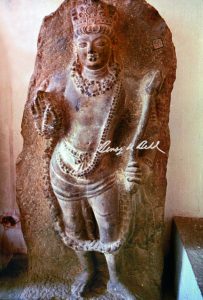In the ninth article and film of the 12-part series on the story of Buddhism, art historian and producer-director BENOY K BEHL travels to the Buddhist sites of the Paradise on Earth
This film is about the Buddhist legacy of Kashmir. The sites covered are Harwan (4th Great Buddhist Council), Parihaspura, Mulbek Buddha, Kartse Buddha, Sani Stupa (originally made by Emperor Kanishka, 1st cent. CE), Guge in Tibet, monasteries in Nyarma, Tabo, Lhalung, Nako, Alchi, Mangyu and Sumda (1st cent.-12th cent. CE).
In the first century CE, the Kushana Emperor Kanishka held the Fourth Great Buddhist Council in Kashmir. Here, Sanskrit became the language of Buddhist scriptures instead of Pali, which was used before. This was also the first time that Mahayana Buddhism received major royal patronage.

In 975 CE, King Yeshe Od (the ruler of Guge, consisting of Western Tibet, Ladakh, Lahaul-Spiti and Kinnaur) sent the scholar Rinchen Zangpo to Kashmir. He made the arduous journey, to Kashmir, which was a centre of Buddhism, to bring back scriptures with the original and pure knowledge of the faith. The mission was also to bring back artists to build, paint and sculpt 108 new Buddhist temples in Guge.